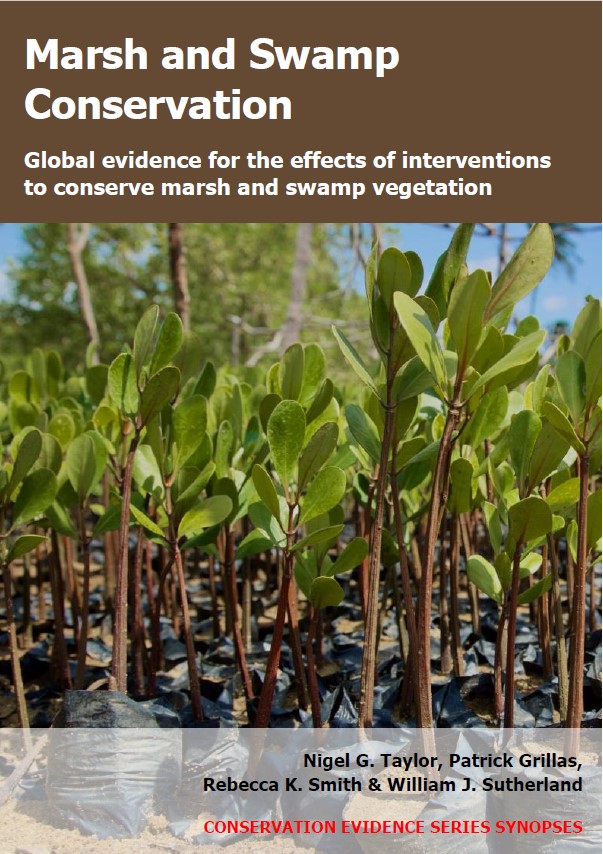Reduce fertilizer or herbicide use: freshwater marshes
-
Overall effectiveness category Unknown effectiveness (limited evidence)
-
Number of studies: 1
View assessment score
Hide assessment score
How is the evidence assessed?
-
Effectiveness
50% -
Certainty
30% -
Harms
0%
Study locations
Supporting evidence from individual studies
A replicated, site comparison study in 2010–2011 involving eight rice fields in southern Brazil (Linke et al. 2014) found that organically farmed fields were similar to conventionally farmed fields in terms of wetland plant community composition, richness and diversity (but not biomass), but different from natural marshes. Across one year of cultivation, the overall plant community composition in organic fields was statistically similar to conventional fields (data reported as a graphical analysis). Fields under each farming treatment had statistically similar wetland plant species richness (organic: 3–6 species/0.9 m2/survey; conventional: 1–7 species/0.9 m2/survey) and diversity (data reported as a diversity index). However, a total of 27 wetland plant species were recorded in the organic fields, compared to 23 in conventional fields. The average biomass of wetland plants was higher in organic fields (1–18 g/m2) than conventional fields (<1–11 g/m2). Compared to nearby natural marshes, the organic rice fields supported a different plant community with fewer total species (natural: 55), lower species richness (natural: 7–11 species/0.9 m2), lower diversity, and less biomass (natural: 36–228 g/m2). Methods: Between August 2010 and August 2011, at six stages in the rice-growing calendar, vegetation was surveyed in four organically farmed rice fields (no artificial fertilizers or herbicides; weeds controlled by changing water level and tilling), four conventionally farmed rice fields, and four nearby natural ephemeral marshes. Wild wetland plant species (i.e. excluding rice and terrestrial species) were recorded in ten 30 x 30 cm quadrats/site/survey. Their above-ground parts were collected, then dried and weighed.
Study and other actions tested
Where has this evidence come from?
List of journals searched by synopsis
All the journals searched for all synopses
This Action forms part of the Action Synopsis:
Marsh and Swamp Conservation
Marsh and Swamp Conservation - Published 2021
Marsh and Swamp Synopsis





)_2023.JPG)














